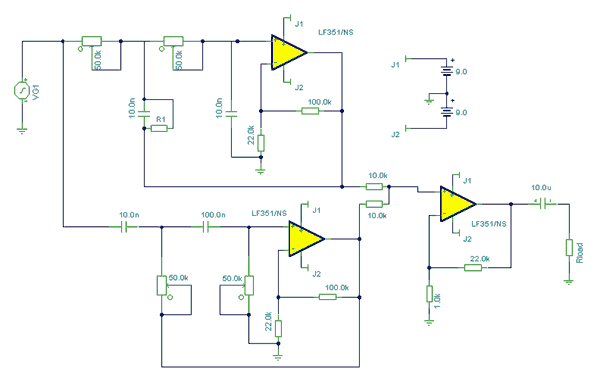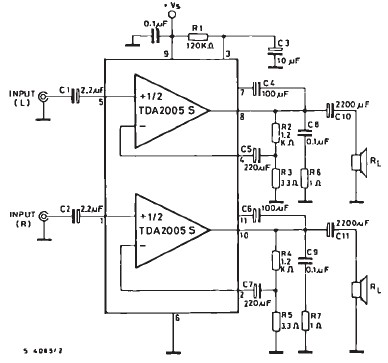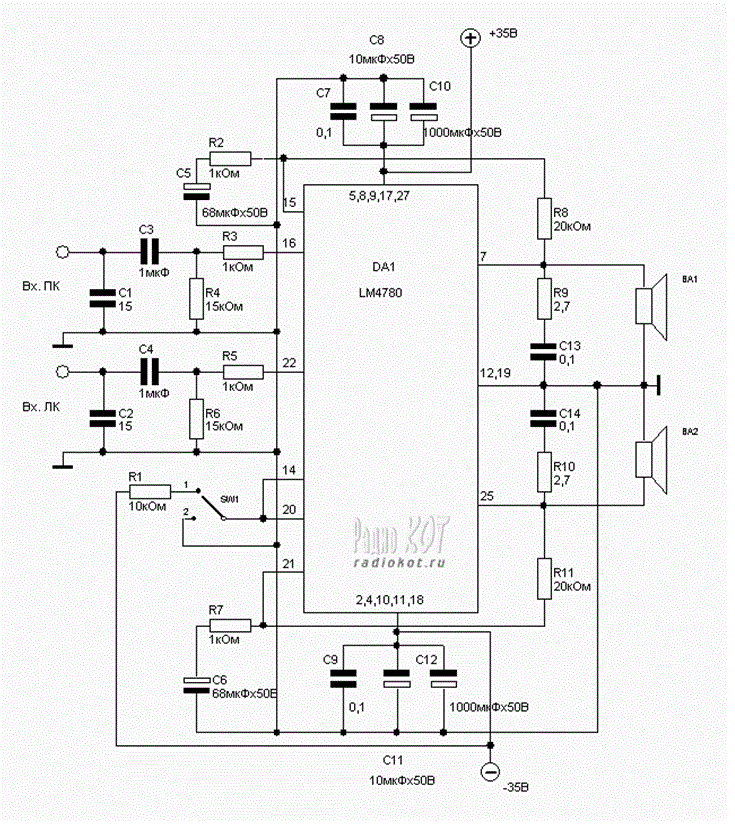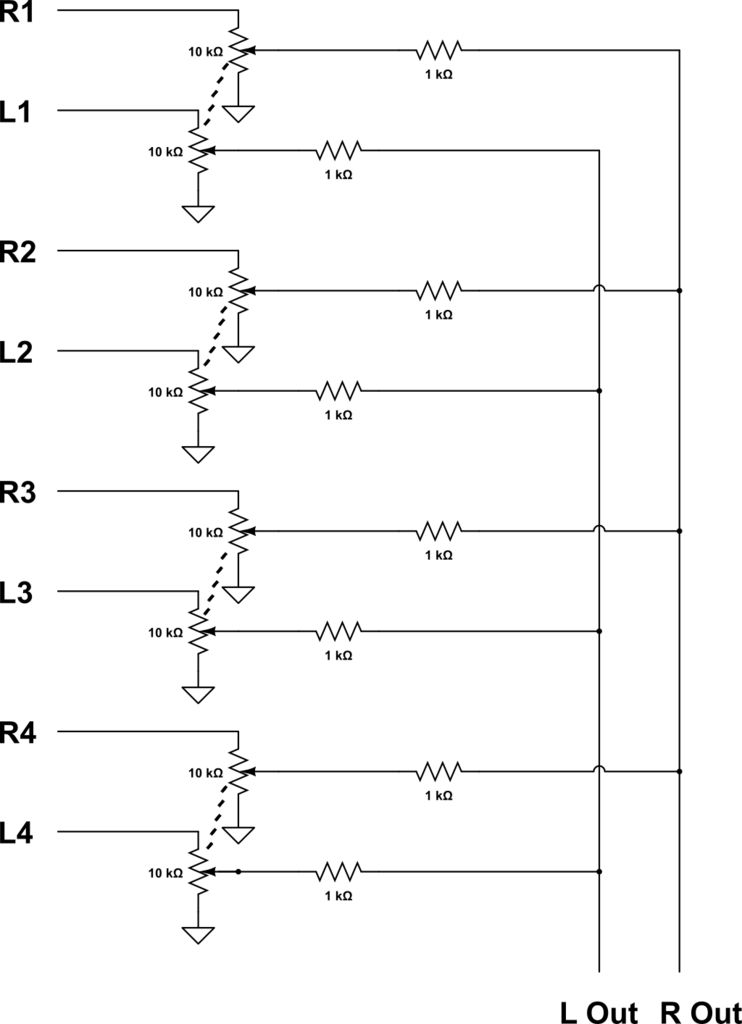
audio notch filter

At first glance, this circuit appears to be quite complex; however, when analyzed, it can be segmented into high-pass and low-pass filter sections, which are subsequently connected to a summing amplifier with a gain of approximately 20 times. The supply rail voltage is ±9V DC. The controls can also be modified for operation as a band-stop (notch) filter or a band-pass filter.
This circuit design incorporates both high-pass and low-pass filter configurations, allowing for versatile frequency response characteristics. The high-pass filter section is designed to attenuate low-frequency signals while allowing high-frequency signals to pass through, effectively removing unwanted low-frequency noise. Conversely, the low-pass filter section is engineered to block high-frequency signals while permitting low-frequency signals to pass, which is useful for filtering out high-frequency interference.
The summing amplifier, which follows the filter sections, combines the outputs of both filters. This amplifier is configured to achieve a gain of approximately 20, meaning that the output signal will be 20 times greater than the input signal. This gain is critical for applications requiring signal amplification after filtering, ensuring that the resultant signal is strong enough for subsequent processing stages.
Additionally, the circuit's design allows for flexibility in its operational mode. By adjusting specific control parameters, the circuit can be reconfigured to function as a band-stop (notch) filter, which is particularly useful for eliminating narrow frequency ranges, such as those associated with hum or interference from specific sources. Alternatively, it can be set up as a band-pass filter, enabling the passage of signals within a certain frequency range while attenuating frequencies outside of this band.
The use of a ±9V DC supply rail voltage provides adequate headroom for the amplifier and filter sections to operate effectively without distortion, ensuring that the integrity of the signal is maintained throughout the processing stages. This circuit is thus well-suited for various applications in audio processing, signal conditioning, and communications systems, where precise control over frequency response is essential.At first glance this circuit looks fairly complex, but when broken down, can be divided into high pass and low pass filter sections followed by a summing amplifier with a gain of around 20 times. Supply rail voltage is +/- 9V DC. The controls may also be adjusted for use as a band stop (notch) filter or band pass filter. 🔗 External reference
This circuit design incorporates both high-pass and low-pass filter configurations, allowing for versatile frequency response characteristics. The high-pass filter section is designed to attenuate low-frequency signals while allowing high-frequency signals to pass through, effectively removing unwanted low-frequency noise. Conversely, the low-pass filter section is engineered to block high-frequency signals while permitting low-frequency signals to pass, which is useful for filtering out high-frequency interference.
The summing amplifier, which follows the filter sections, combines the outputs of both filters. This amplifier is configured to achieve a gain of approximately 20, meaning that the output signal will be 20 times greater than the input signal. This gain is critical for applications requiring signal amplification after filtering, ensuring that the resultant signal is strong enough for subsequent processing stages.
Additionally, the circuit's design allows for flexibility in its operational mode. By adjusting specific control parameters, the circuit can be reconfigured to function as a band-stop (notch) filter, which is particularly useful for eliminating narrow frequency ranges, such as those associated with hum or interference from specific sources. Alternatively, it can be set up as a band-pass filter, enabling the passage of signals within a certain frequency range while attenuating frequencies outside of this band.
The use of a ±9V DC supply rail voltage provides adequate headroom for the amplifier and filter sections to operate effectively without distortion, ensuring that the integrity of the signal is maintained throughout the processing stages. This circuit is thus well-suited for various applications in audio processing, signal conditioning, and communications systems, where precise control over frequency response is essential.At first glance this circuit looks fairly complex, but when broken down, can be divided into high pass and low pass filter sections followed by a summing amplifier with a gain of around 20 times. Supply rail voltage is +/- 9V DC. The controls may also be adjusted for use as a band stop (notch) filter or band pass filter. 🔗 External reference





